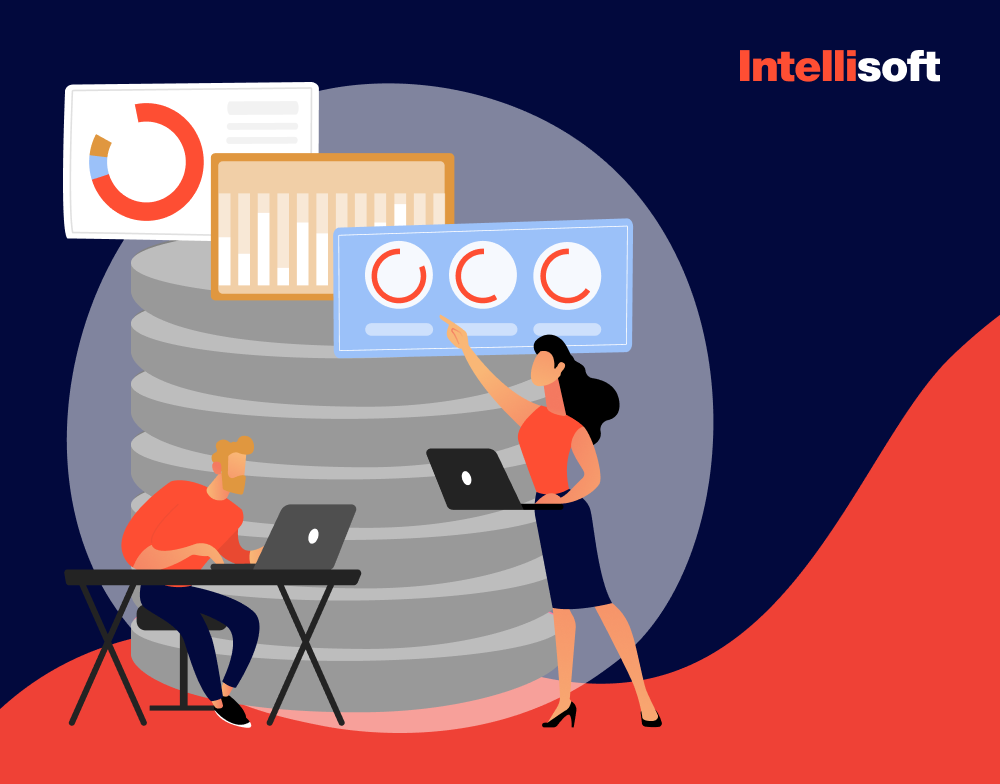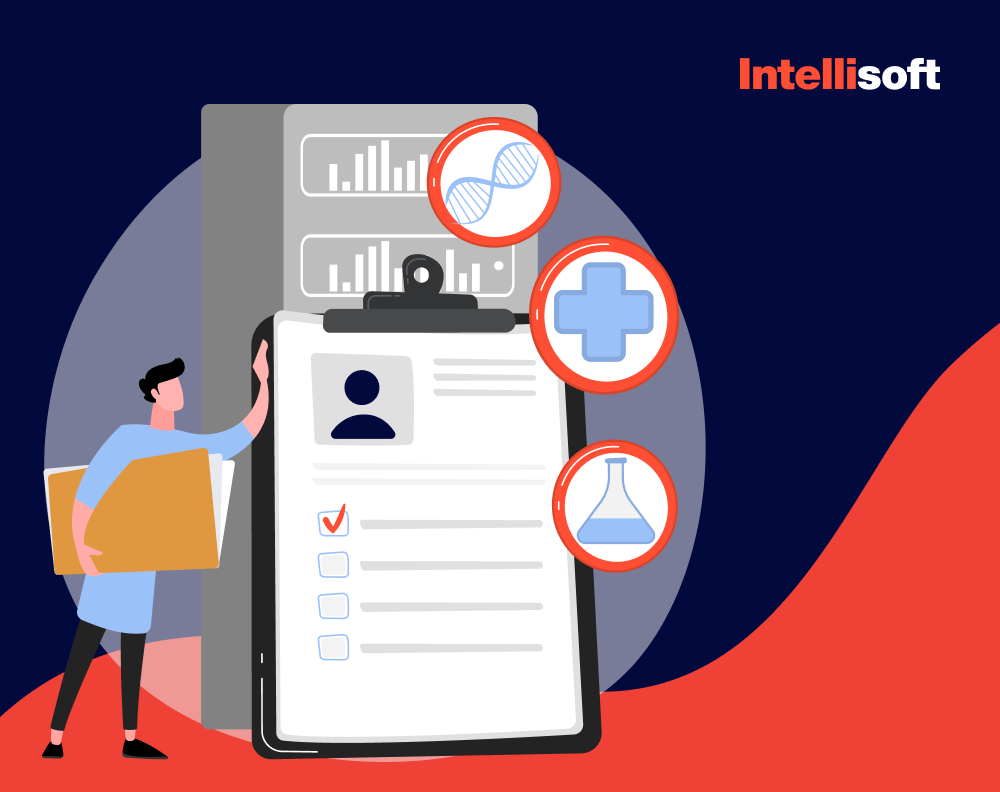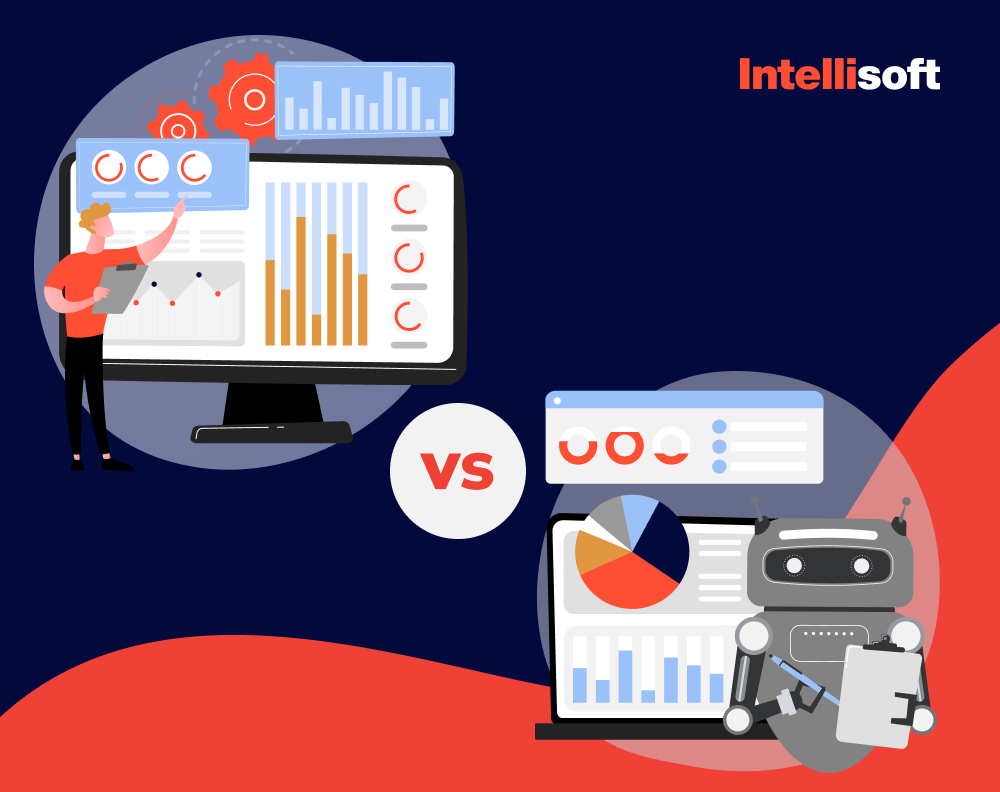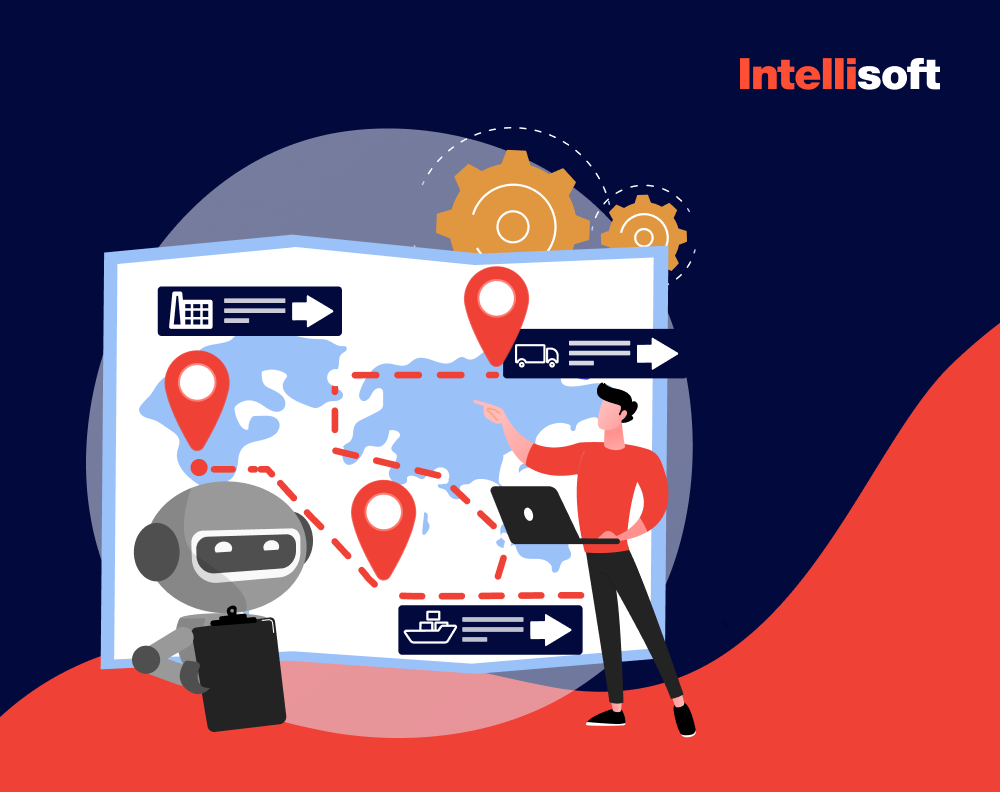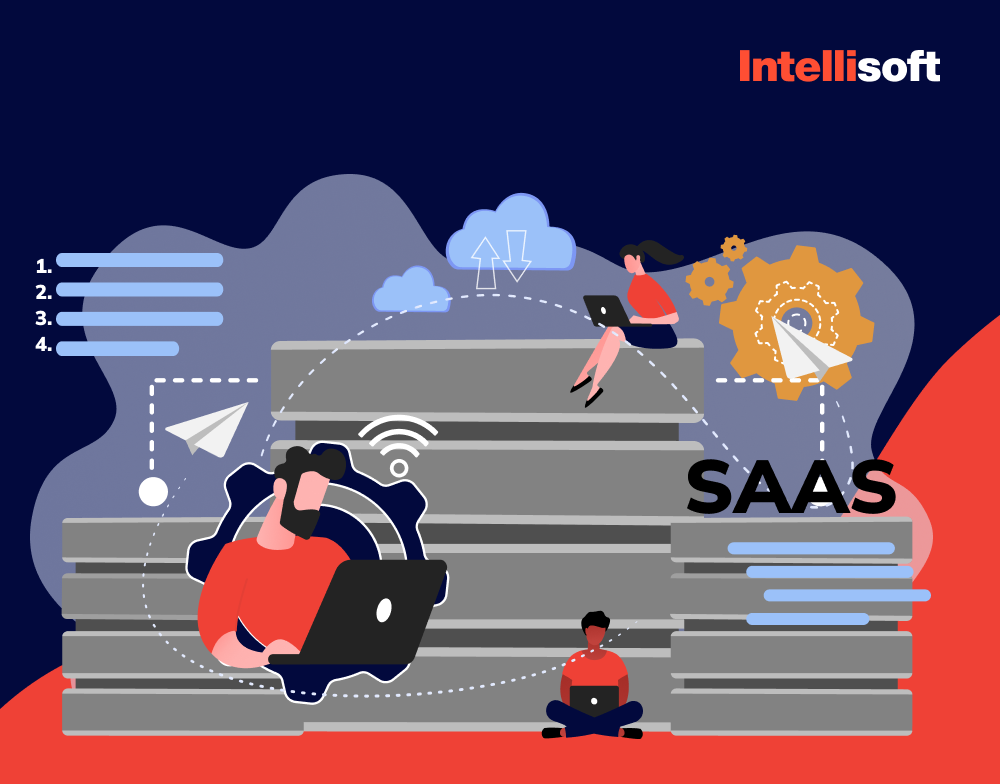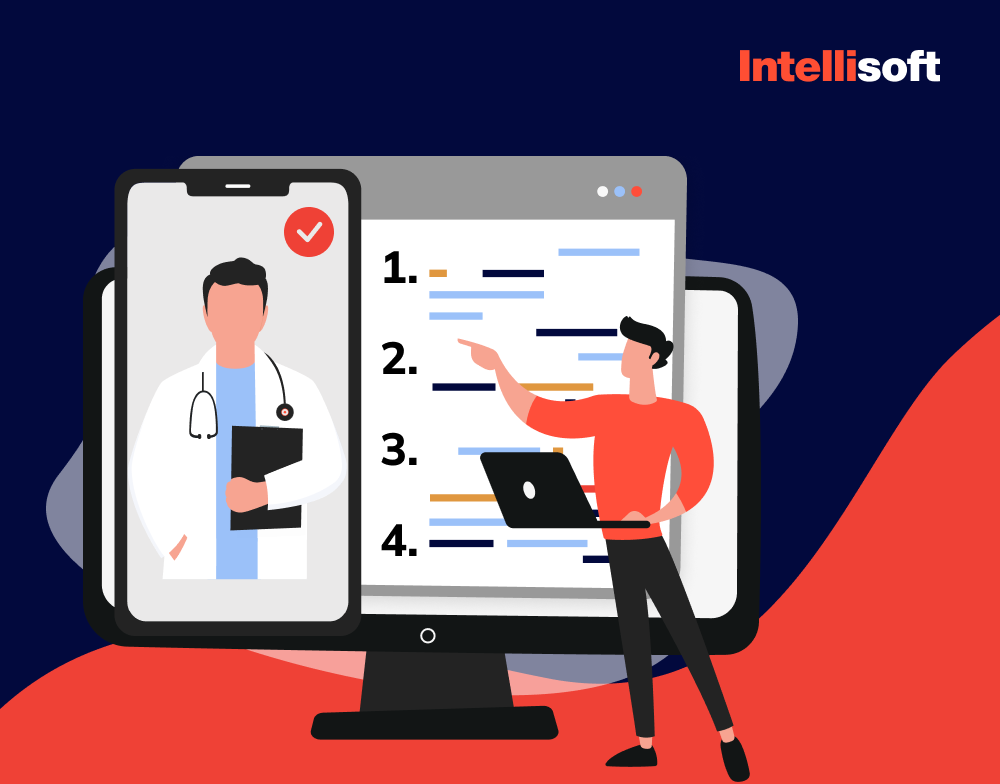A software architecture that can be scaled effectively is essential for expanding a web application or any other digital product. This approach enables your solution to handle high traffic without issues and allows you to fix errors without having to shut down the entire system. As a result, scalable architecture plays a vital role in achieving high software performance.
In this article, you will learn about the concept of software scalability in detail. Using different approaches, you will also discover various methods to develop a scalable web or any other product, including migrating the product to the cloud.
Table of Contents
What Is Scalable Architecture?
Scalable web application architecture can handle any number of visitors simultaneously without running out of backend resources. It can provide or revoke resources according to demand without compromising its integrity. Scaling up the system’s software and hardware enables the application to handle an increased workload effectively. Users will move on to the competition if a web application doesn’t load fast enough, isn’t always available, and crashes under heavy traffic.
Companies should prioritize scalability and scalable app architecture from the very start of their projects. Otherwise, they may encounter a myriad of problems down the line:
- More traffic on the website leads to slower loading times and decreased responsiveness, negatively impacting the user experience.
- E-commerce businesses that use traditional web architecture tend to experience longer page load times when they update their inventory.
- Adding new code is time-consuming and potentially dangerous for web architecture and application integrity.
Focusing on scalability in web architecture is a smart approach that can help businesses address many challenges. By prioritizing scalability, companies can overcome the following issues:
- Reduced errors
- Quicker implementation of changes
- Prolonged longevity of products and services
- Enhanced brand loyalty
One of the most fascinating aspects of scalable web architecture is its bidirectional functionality. If a company experiences reduced demand during low seasons, it could downscale its network effortlessly just as it had scaled up. This flexibility is highly beneficial when it comes to reducing IT expenses.
The development of a scalable web application entails multiple crucial features. However, the fundamental components of a web application’s architecture remain identical. Let’s delve deeper into each of these components to gain better insight:

- Frontend. The frontend of an application is the section that directly interacts with the user. When a user performs many actions at once, scaling the frontend of a web application can prevent lagging. Problems in the backend actually cause many issues that originate in the frontend.
- Backend. The backend of a web application serves as the underlying foundation that supports and drives the front end. It comprises all the intricate processes and procedures undertaken during the front end’s development. The quality and efficiency of the backend significantly impact the application’s overall performance.
- Database. A critical component of an application is its database, which is responsible for collecting and storing all the data associated with the application. As applications generate vast amounts of data, building a scalable database architecture is critical, and to achieve this, companies frequently resort to distributed computing processes and indexes.
Clean coding, third-party services, hardware, and the framework used are additional factors affecting web application scalability.
Principles of Scalability in Software Development
Designing and developing software that can handle growing user bases and increased workloads while maintaining optimal performance is essential for achieving scalability. To achieve this, software engineers follow certain well-established principles that guide the entire process from start to finish. These principles aim to ensure that the final software product is scalable, reliable, and efficient, enabling businesses to expand and adapt to changing market conditions without hassle. Let’s explore some vital scalable architecture design principles below.
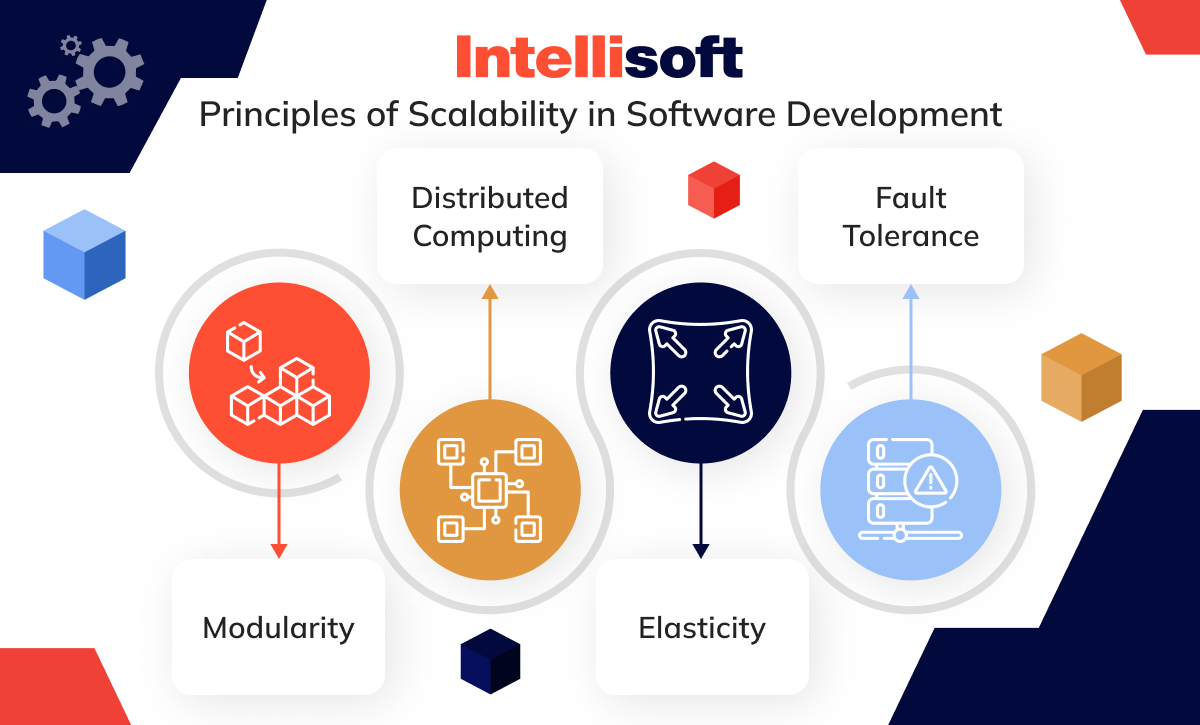
Modularity
Modular design is a software development approach that emphasizes the creation of independent, self-contained components or modules. These modules can operate separately from the rest of the system, and their scalability can be adjusted without influencing the entire system’s performance. Therefore, developers can ensure efficient resource allocation and improved performance.
This modular approach promotes flexibility and scalability, making managing and maintaining complex software systems easier. It also provides benefits such as increased code reusability and maintainability.
Distributed Computing
Distributing computational tasks across multiple machines or nodes is a key strategy when achieving scalability in software systems. This approach, known as horizontal scalability, allows additional machines to be added to the system to handle increased workloads. By balancing the workload, distributed computing prevents any single device from becoming a bottleneck, ensuring even workload distribution and preventing system overload.
In addition to enabling horizontal scalability, cloud computing also enhances fault tolerance. In the event of a single machine failure, the system can continue to operate normally, preventing a complete system failure.
Elasticity
Elasticity is a term used to describe a system’s ability to scale up or down depending on the demand. Companies can achieve this by implementing auto-scaling mechanisms, which help in efficient resource utilization and cost optimization. Usually, this involves running applications in the cloud, where services can expand their capabilities during high traffic or increased workload. Additional resources can be added to ensure optimal performance and can be turned off once the demand subsides.
Fault Tolerance
Designing and implementing fault-tolerant systems is crucial to minimize the negative impact of any potential hardware or software failures. By incorporating redundancy and failover mechanisms, the system can continue to operate seamlessly even if certain components fail.
To achieve this, one can create backups and duplicate critical components or data to ensure that another can immediately take over if one element fails. Failover mechanisms are also essential, as they automatically redirect traffic to backup components or systems in case of failure.
Software Scalability in Different Development Models
Scalability is a critical aspect of software development that ensures applications can handle increased workloads and user demands. To achieve scalability, developers must consider the specific architectural requirements of their chosen development model, whether it is a monolithic or microservices (or even serverless approach). They can then apply various scalability principles to optimize performance and ensure scalability across different technologies and architectures.
In a monolithic architecture, scalability is one of the significant challenges. Fortunately, there is a solution; modularizing the system into smaller, independently scaled components. Each service can be scaled individually by breaking down the monolith into more minor services. This approach not only improves resource allocation but also optimizes performance. So, instead of having a single, large, and inflexible system, we can now have a more agile and scalable architecture that can adapt to changing demands.
In a microservices architecture, the ability to scale up or down based on the workload is built into the very design. The architecture comprises many small and independent services, each representing a specific business capability. This modular approach allows teams to develop and deploy services independently, providing flexibility to adapt to changing business requirements.
In a serverless architecture, the cloud provider is responsible for managing scalability. This approach means that the system can automatically scale up or down based on the current demand without any manual intervention required from the user. One of the key advantages of serverless architectures is their ability to easily handle sudden spikes in traffic while efficiently scaling the necessary resources to match the workload.
Embracing Serverless Architecture: Constructing Scalable Web Apps
Serverless architecture allows developers to create and run applications without managing servers. However, it doesn’t mean that servers are absent. The responsibility of managing the servers is transferred from the developer to the cloud provider. Serverless platforms automatically scale, maintain, and administer the servers. This shift of responsibility enables developers to concentrate solely on the code.
Key components of serverless architecture include:
- Functions as a Service (FaaS). This model enables developers to execute code snippets (functions) in response to events without constantly maintaining an application server. Popular FaaS services include AWS Lambda, Azure Functions, and Google Cloud Functions.
- Backend as a Service (BaaS). BaaS providers offer backend services such as database management, user authentication, and file storage through APIs, reducing server-side logic and management needs.
AWS scalable architecture offers inherent scalability and modularity, allowing for efficient resource utilization and faster iteration. It also saves costs by only charging for actual compute time, but introduces new challenges such as function execution times and cold starts. Despite these challenges, serverless architectures remain an attractive choice for building responsive web applications.
Key Performance Indicators (KPIs) for Scalable Systems
To achieve scalability, you should have measurable criteria that can help guide and evaluate the progress of a system’s scalability. Key Performance Indicators (KPIs) play a vital role in this regard, functioning as benchmarks for assessing the scalability of a system. They are essential in providing feedback on how effectively a system can adapt to increased loads and complexity and identifying areas that need improvement. Several KPIs are fundamental to assessing the scalability of a system:
- Scalability. Determining the maximum workload a system can efficiently handle before its performance degrades is crucial in strategizing and preparing for scaling activities.
- Response Time and Latency. Response time refers to the time it takes for a system to react to a given input or request. Measuring response time becomes increasingly important for ensuring systems perform effectively and efficiently.
- Throughput. System capacity is typically measured by the amount of data or number of transactions it can handle within a specific timeframe. This capacity indicator is crucial for assessing the system’s ability to function efficiently under heavy loads.
Scalable Architecture Key Usages
Scalable architecture plays a vital role in the success of certain types of applications. Specifically, it is critical for applications expected to experience growth and fluctuating demand over time. Some examples of applications that stand to benefit from scalable software architecture include:
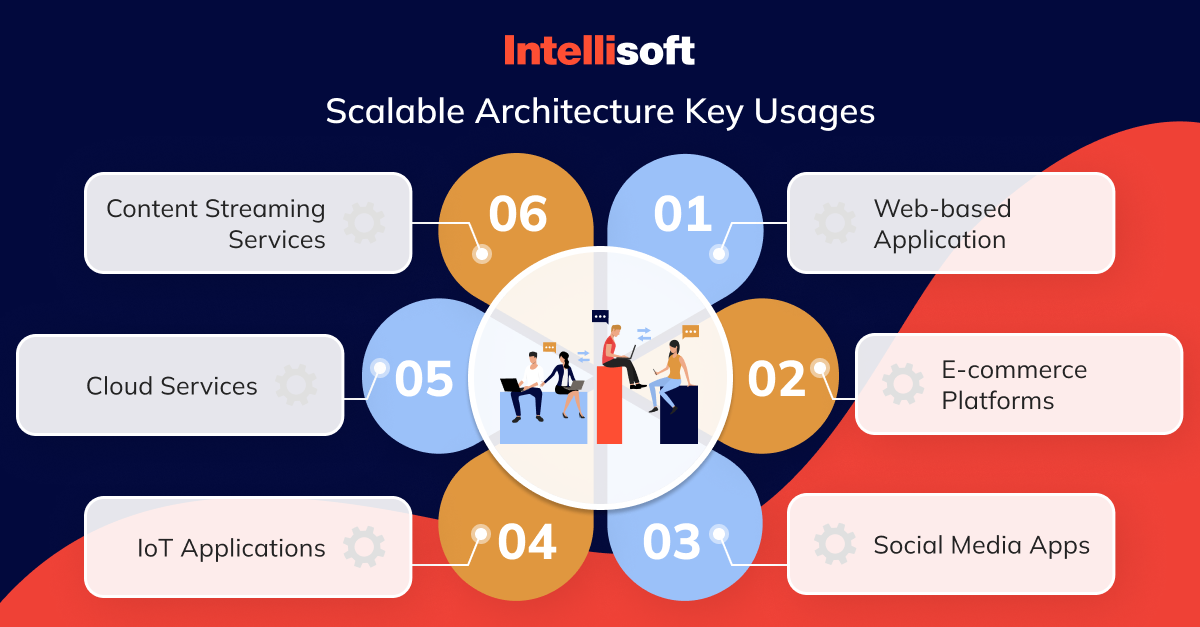
Web-based Application
Web-based applications are becoming increasingly popular due to their ability to reach many users and provide easy accessibility. However, as user numbers and loads can vary significantly, these applications require a scalable web architecture to manage and accommodate such fluctuations effectively.
E-commerce Platforms
These platforms often encounter fluctuations in visitor traffic, particularly during sales or promotional events, which can cause disruptions in their operations. As a result, scalable ecommerce architecture allows to handle sudden surges in demand and maintain seamless operations during peak periods.
Social Media Apps
Social media applications have become integral to our daily lives, enabling us to connect with friends, family, and even strangers worldwide. However, with the increasing number of users, these applications need to scale dynamically to handle large volumes of data and high traffic.
Content Streaming Services
These services must ensure seamless streaming of high-quality video or audio to cater to a large audience. This approach requires the platforms to have the capacity to scale up robustly and provide uninterrupted streaming irrespective of the number of users accessing it. Therefore, building the scalable website architecture is critical.
Cloud Services
On-demand cloud services should dynamically adjust their resource allocation process to meet the changing needs of users and businesses. Scalable cloud architecture ensures that resources are utilized efficiently and workload spikes are managed effectively without causing any disruption or delay in service delivery.
IoT Applications
The Internet of Things concept entails an interconnected web of devices exchanging information and analyzing data. Given the rapid growth in the number of devices, and the sheer volume of data generated, ensuring that the architecture that underpins this system is scalable and can manage the ever-increasing data and device connections is crucial.
Horizontal, Vertical, and Diagonal Scaling: What Is The Difference?
Companies can scale their applications in three different ways: horizontally, vertically, and diagonally. Each has advantages and disadvantages, so let’s review them in more detail.
Scale Horizontally
Horizontal scaling, commonly referred to as “scaling out,” is a method for boosting a software application’s overall performance. This technique involves adding more nodes, servers, processes, or machines to the existing infrastructure, which allows the system to break down into smaller components and distribute them across individual machines.
Adding more resources to execute the same function simultaneously enhances the system’s performance. This method is not only fast but also cost-effective, as it only requires acquiring additional resources and programming them to execute a specific function.
Scale Vertically
Vertical scaling, also known as “scaling up,” is a method of enhancing the performance of a web application by increasing the power of the current machines operating behind it. This approach involves upgrading the system’s hardware resources, such as faster CPUs, larger and faster memory, bigger and faster hard disks, and other advanced features.
While vertical scaling can significantly improve a web application’s performance, it comes with a hefty price tag. Continuously upgrading to more powerful hardware resources requires a substantial financial investment. Moreover, acquiring high-end components can be challenging, and updating the system may take considerable time.
Scaling Diagonally
Diagonal scaling is a type of scaling that combines horizontal and vertical scaling techniques. It involves upgrading the existing components to more powerful ones while also adding new ones to the system. In theory, this is the most effective way of scaling regarding cost and performance optimization.
However, choosing between the three types of scaling ultimately depends on various factors, such as the application requirements, expectations, and other variables. Companies can scale their applications in three ways; horizontal, vertical, and diagonal scaling. Each of these approaches to build scalable system architecture has its pros and cons.
Related Articles:
- Docker and Microservices: The Future of Scalable and Resilient Application Development
- Monolithic vs Microservices: Pros and Cons
- What Is Kubernetes And When to Use It: Key Trends
- AWS vs. Azure vs. Google Cloud: Comparison, Benefits, and Use Cases
- The Great Cloud Storage Debate: ownCloud vs Nextcloud – Which One Is Right for You?
What Are Popular Scalable Architecture Frameworks?
Many web developers and software engineers consider specific frameworks the top choices when building scalable web applications.
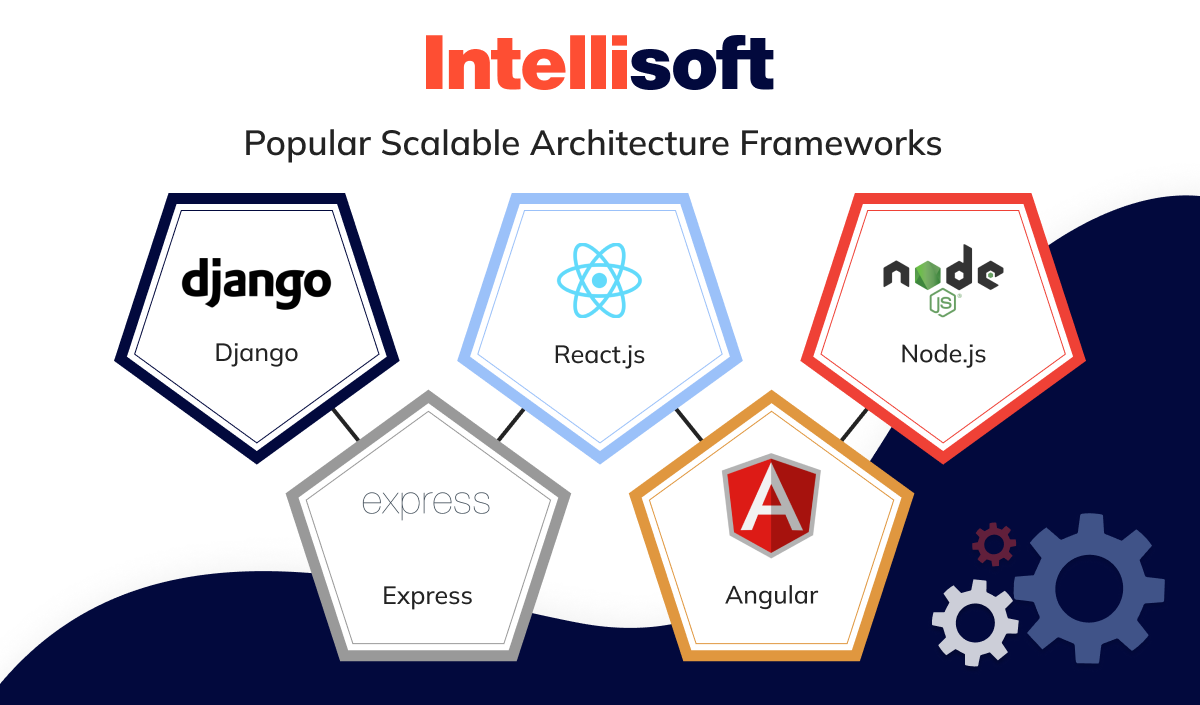
- Django. This top-notch Python web framework facilitates fast-paced development and ensures a clean, practical design. Its capabilities make it ideal for creating high-quality, robust, scalable web applications.
- Express. This Node.js web application framework is designed to be lightweight and highly customizable, empowering developers who require flexibility in their web and mobile applications. Its feature-rich platform, known for its scalability, is widely regarded as one of the most popular frameworks used under Node.js.
- React.js. React.js is a widely used JavaScript library celebrated for its outstanding performance and versatility. This library, specifically designed for creating dynamic user interfaces, inspires developers with its potential for use in a variety of web development projects that demand scalability.
- Angular. Angular is a comprehensive platform and framework that enables developers to build robust and scalable single-page client applications using HTML and TypeScript. It is highly regarded for its ability to enhance productivity and streamline web application development while ensuring top-notch performance and reliability.
- Node.js. Node.js is a powerful runtime widely recognized for its high scalability and ability to handle a large number of network connections concurrently. Its unique, non-blocking, and event-driven architecture makes it ideal for developing scalable web applications that require real-time interactions.
Coding Techniques for Scalability
When building scalable web architecture and distributed systems, several factors affecting performance, resource utilization, and overall scalability must be considered. Various coding techniques can help ensure that your code can handle increasing amounts of data and traffic.
Caching
Caching helps to reduce the strain on the backend server as the data can be served from the cache instead of querying the database repeatedly. This approach results in faster response times, better scalability, and a more seamless user experience.
Asynchronous Processing
By leveraging asynchronous processing techniques, applications can handle multiple requests efficiently without causing resource blockages. For instance, when using Python asynchronous programming, applications can process more tasks executed in sequence with minimal delays, making the entire process faster and more streamlined.
Optimizing Database Queries
To enhance a software system’s scalability, you should focus on designing and optimizing database queries efficiently. This process involves carefully analyzing and fine-tuning the queries to ensure they are executed as quickly and accurately as possible, leading to improved software performance and responsiveness.
Challenges in Implementing Scalability
Implementing scalability in software systems can be quite complex and intricate, often resulting in various technical challenges that must be addressed. These challenges can take on multiple forms, including:

- Data Consistency. Scaling horizontally can significantly challenge maintaining data consistency across distributed systems.
- Concurrency. Managing concurrent requests and ensuring proper synchronization becomes increasingly complicated as the system scales.
- Performance Optimization. Identifying and optimizing performance bottlenecks is crucial for maintaining responsiveness when scaling.
Hiring IntelliSoft to Build Scalable Architecture Business Apps
Many companies prefer outsourcing for building scalable web apps due to its cost-effectiveness and access to a rich pool of top experts. Outsourcing allows businesses to maintain focus on core operations while still experiencing quick project development. To work with a reliable provider, companies should determine project requirements, choose a location and collaboration model, select the right vendor, and create a contract. Outsourcing scalable application architecture projects may seem daunting, but it’s worth giving it a try with a small project to start with.
At Intellisoft, we pride ourselves on our ability to provide cutting-edge scaling models combined with agile methodologies to ensure your digital product grows and evolves as your business does. Our team of experts has worked closely with startups of all shapes and sizes, helping them scale their applications to new heights.
We offer assistance from dedicated product development specialists, including skilled software architects, who work tirelessly to design and implement strategies to develop and migrate products to the cloud. With our secure and affordable services, you can rest assured that your digital product is in safe hands. Contact us today to take the first step towards a brighter, more prosperous future!


